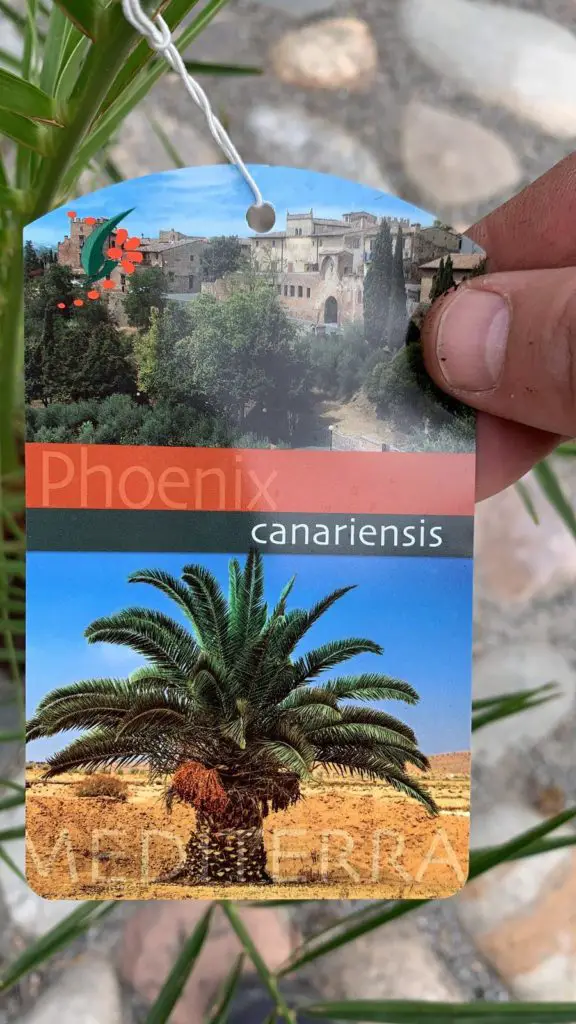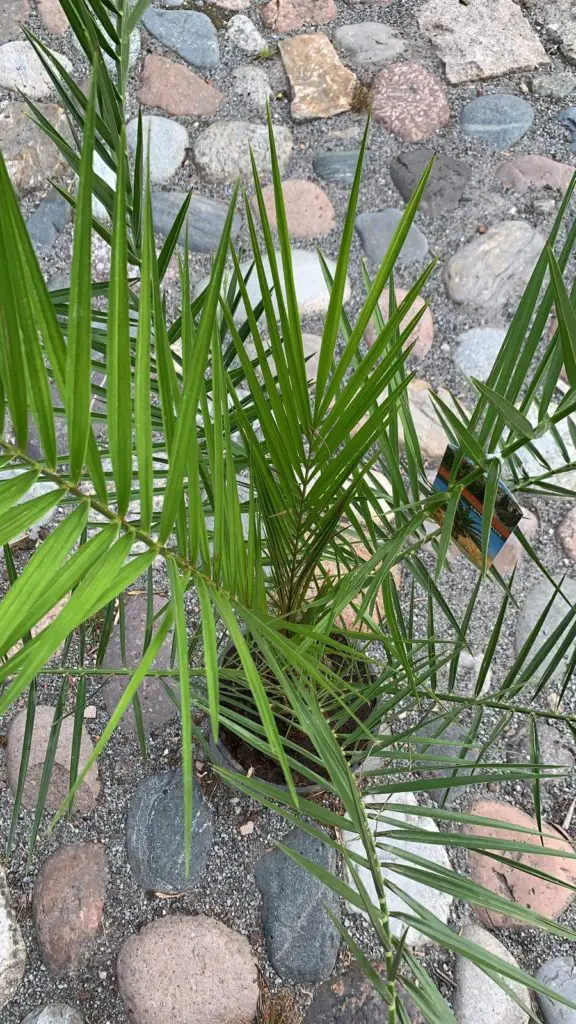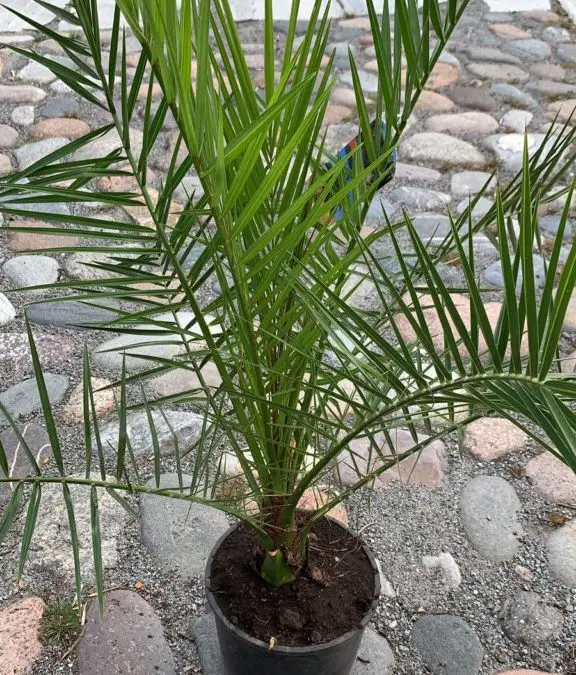The Pineapple Palm (Phoenix canariensis) is one of the most famous palm species. It has emerald green leaves bases cover with brown, fibrous hair. The common name of this plant is the canary date palm. It has Yellow flowers, showy fruits, and evergreen big plants. Further, It attracts many insects as well as it increases the beauty of the garden. Phoenix canariensis is endemic to the Canary Islands.
Alternative names of the Pineapple Palm
Scientific name: Phoenix canariensis
Common names: It has many names such as Canary Island Date Palm, Pineapple Palm, Canary Date Palm,
Slender Date Palm
Classification
| Class | Monocotyledonae |
| Order | Aecales |
| Family | Arecaceae |
| Subfamily | Coryphoideae |
| Genus | Phoenix |
| Species | P canariensis |
| Kingdom | Plantae |

Flowering data
| Flower | It bears very Showy flowers. |
| Bloom Time | Seasonal bloomer so blooms only during some seasons. |
| Bloom Description | It produces some Creamy white to pale yellow blooms. |
| Fruit | Showy |
| Flower color | Yellow |
| Plant type | Palms cycads, Host Plant |
| Domain | Eukaryota |
| Evergreen | Yes it is an evergreen plant. |
| Phylum | Spermatophyta |
| Subphylum | Angiospermae |
| Leaf | Pinnate, induplicate, 7 meters long |
| Habitat | Canary Islands |
| Plant growth | It is a Slow growing plant |
| Attracts | It attracts birds, male bees as well as insects. |
Pineapple Palm plant care
| Water | Low water is enough |
| Sun | Full sun |
| Maintenance | Medium |
| Soil pH | Acid, Neutral |
| Soil type | Loam |
| Origin/native | Canary Islands |

How to care for the Pineapple Palm?
Light:
Phoenix canariensis loves to grow in sunlight, but indoor is perfect to provide it with filtered light.
Watering:
It needs medium water so avoid overwatering this plant. Allow the potting mixture to become slightly dry at the top and then water. Water sparingly, making the mixture barely moist during the rest period.
Soil:
Phoenix canariensis prefers well-drained loamy soil but will tolerate a wide range of soil types, such as sand and heavy clay.
Temperature and humidity:
Average room temperatures of such as 16 to 24°C (65- 75°F) are suitable for growing these palms. Avoid cold drafts. The average room humidity is better for the plants.
Fertilizer:
Use a specially designed palm fertilizer having the right balance of nutrients but that should be suitable for them. However, Do not over-fertilize the palms.
Pruning:
Only prune the old fronds that hang below, but do not remove the growing upright because they grow slowly.
Canariensis plant growth:
Canariensis plant is slowing growing plants. Further, this plant will grow two meters (seven feet) tall and the leaves are 4 to 6 meter long.
Learn more about palms
We have written a few blogs about different types of palms. Here are some of them:
- Pineapple Palm (Phoenix canariensis)
- Areca palm and its benefits
- Palmspear
- Cocos nucifera: Facts to know
- Cordyline australis plant profile:
- Attalea Speciosa: A brief plant profile
- Begonia luxurians plant facts
The Heart of Stavern
In the very heart of Stavern, a beautiful little town in Norway, lies our store Stavern Blomstermakeri. We focus on interior, creativity and happiness. We are all about that blossoming feeling from the heart. If you have a passion for flowers, need inspiration or are keen to learn more about what we do here in Stavern, feel free to follow us on Pinterest for inspo, Instagram for photos, Youtube for learning or Facebook for the newest updates.
